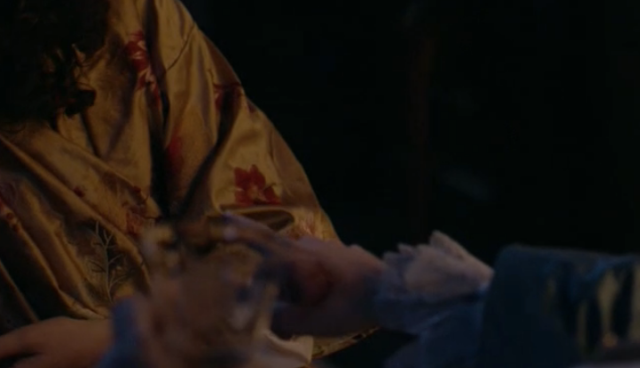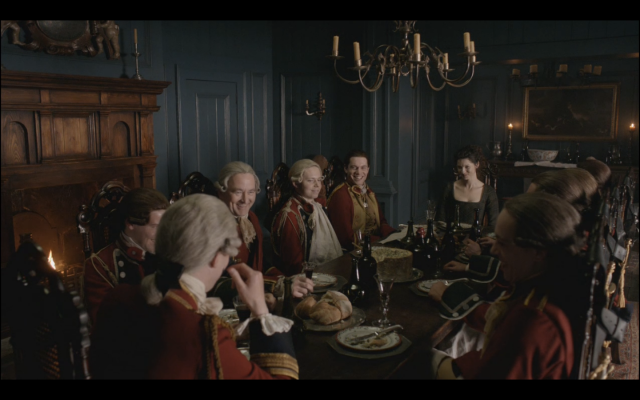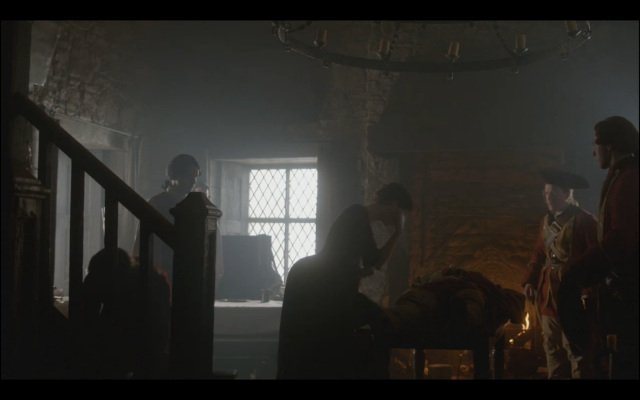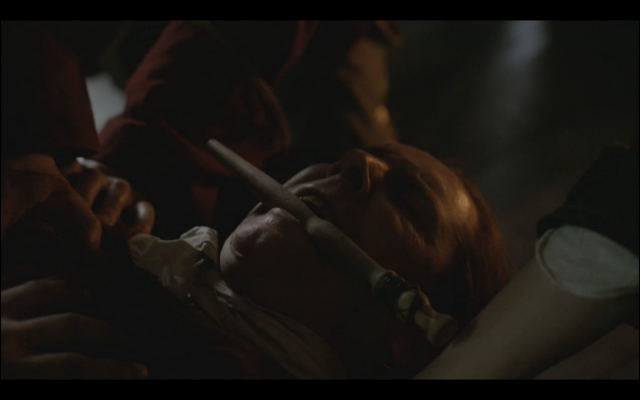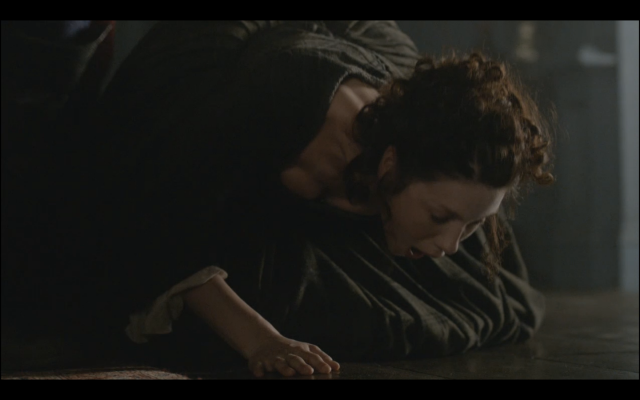204: La Dame Blanche

The image in the title sequence of a nail hammered into a leg has made many fans squeamish and curious for 3 episodes now. Tonight we finally meet the poor owner of that leg.

In classic Claire style, despite of the dinner plans for the evening in which the “who’s who” of Jacobite France will be hosted at Chateau Fraser, Claire rushes to L’Hopital to help following news of an explosion at the armory. She assists Monsieur Forez in treating a man with a significant injury to his leg – an open fracture to the tibia is shown.
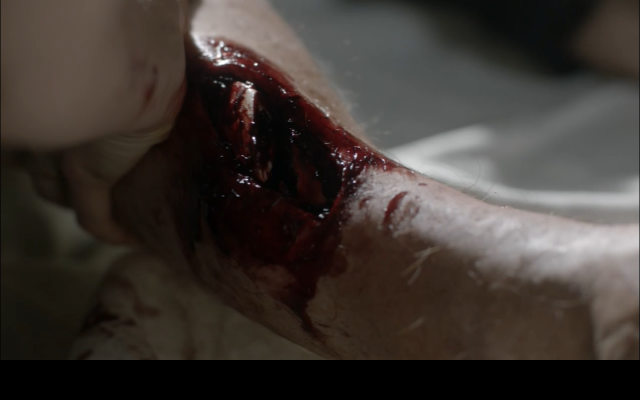
It seems that despite his primary job as executioner, Monsieur Forez is an empathetic healer who has employed a technique to minimize the pain of reducing an open leg fracture.
As we’ve seen already in Outlander, with Jamie’s dislocated shoulder and the leg amputation in the tavern, anesthestic options of the day were mostly limited to whisky, laudanum and a strong stick to bite. Monsieur Forez, however, presents an additional option.
He reached into his capacious pocket one more, this time coming out with a small brass pin, some three inches in length, with a wide, flat head. One bony, thick-jointed hand tenderly explored the inside of the patient’s thigh near the groin, following the thin blue line of a large vein beneath the skin. The groping fingers hesitated, paused, palpated in a small circle, then settled on a point. Digging a sharp forefinger into the skin as though to mark his place, Monsieur Forez brought the point of the brass pin to bear in the same place. Another quick reach into the pocket of marvels produced a small brass hammer, with which he drove the pin straight into the leg with one blow.
The leg twitched violently, then seemed to relax into limpness.
From Dragonfly in Amber by Diana Gabaldon, Chapter 14.
Monsieur Forez has performed what may be considered the 18th century version of a nerve block! He has injured the femoral nerve, causing the (hopefully) temporary interference of transmission of signal along that nerve.
Nerve blocks are widely used today, and probably the most familiar is at the dentist’s office when a portion of the mouth is temporarily numbed and part of the face paralyzed by the injection of local anesthetics (lidocaine, bupivacaine, etc.) to block the nerve to that respective area. Other common applications of nerve blocks: repair of lacerations, spinal anesthesia for surgeries, nerve blocks in the upper and lower extremities for surgery, nerve blocks to help control chronic pain.
In Dragonfly in Amber, Claire’s patient has a fracture of the femur in the thigh as well as the tibia in the lower leg. She describes a block of the femoral nerve – piercing the femoral nerve in the front of the upper thigh near the groin. This block primarily was for the femur fracture – it provided anesthesia to the front of the leg where the bone protruded from the thigh and additionally, made the reduction of the fracture (or realignment of the bones by Monsieur Forez) easier by temporarily paralyzing the strong muscles of the thigh that would be forcefully contracting in response to the trauma, allowing him to more easily maneuver the bones into anatomical position.
The image below shows the areas of the leg numbed by the femoral nerve block. All of the colored areas of the front of the leg as shown below are numbed:

Claire’s patient in Dragonfly in Amber suffered different injuries from our patient in the Starz adaptation:
The leg, though, was something else; an impressive double compound fracture, involving both the mid-femur and the tibia. Sharp bone fragments protruded through the skin of both thigh and shin, and the lacerated flesh was blue with traumatic bruising over most of the upper aspect of the leg.
From Dragonfly in Amber by Diana Gabaldon, Chapter 14.
Instead, in episode 204, Claire and Monsieur Forez are dealing with only a lower leg fracture – an open fracture of the tibia and possibly the fibula as well. Monsieur Forez performs a nerve block just below the knee on the medial (inner) side of the lower leg. It would appear he has performed a saphenous nerve block with a below the knee approach. This would result in numbing of the lower leg on the medial (inner) side.
Same image, but with this saphenous nerve block, only the blue-gray colored area on the lower leg labeled saphenous n. would be numb:

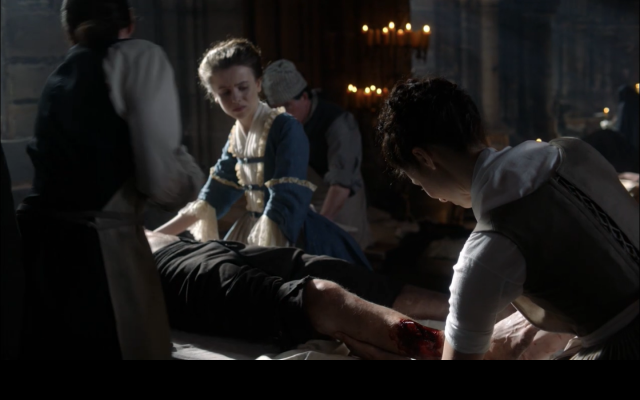
The nerve block made a lot of sense in the book for dealing with a femur fracture as it provided anesthesia to the front of the leg in the area of the thigh with broken bone protruding. Additionally, paralysis of the strong thigh muscles helped facilitate the reduction (realignment) of the fractured bone. For the lower leg fracture in the show, the nerve block performed to just the lower leg may have provided some pain relief but wouldn’t have been quite the game changer of the femoral block in a femur fracture.
Some other medical musings on this episode:

